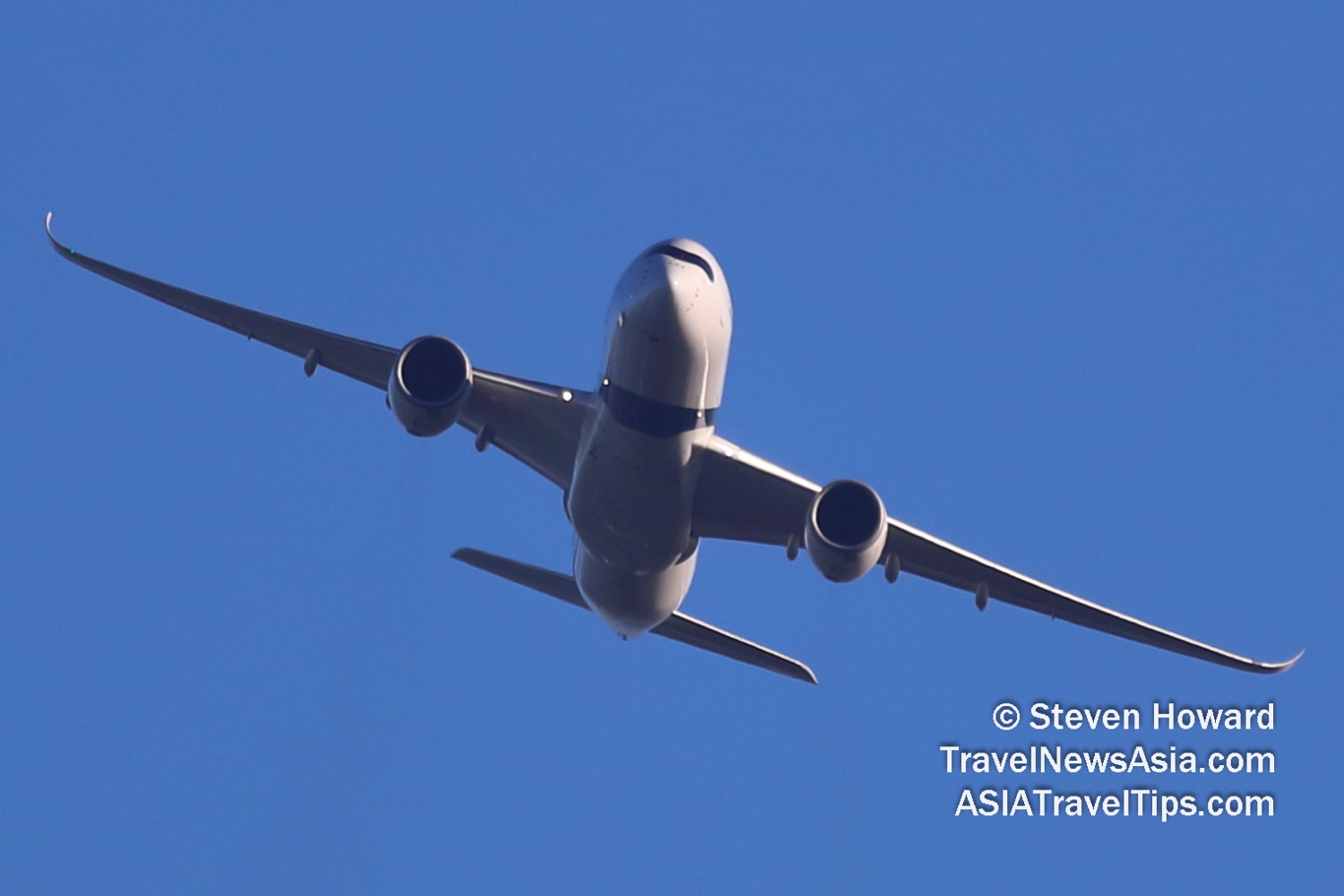|
(31 May 2022, 11:12 +07)
Preliminary April 2022 traffic figures from the Association of Asia Pacific Airlines (AAPA)
show a
healthy increase in international passenger demand, as the
progressive relaxation of border restrictions across the region
stimulated business and leisure travel.
Overall, Asia Pacific airlines recorded a 272.9%
jump in the number of international passengers carried (a total of
4.8 million) compared to the same month last year. Demand rose to
an average of 15.2% of the volumes posted in the pre-pandemic
month of April 2019.
In revenue passenger (RPK) terms,
international passenger demand increased by a robust 302.7%
year-on-year, reflecting the strength of longer haul traffic.

Malaysia Airlines A350-900 reg: 9M-MAB. Picture by Steven Howard of TravelNewsAsia.com
Available seat capacity expanded by 77.5% year-on-year, resulting
in a solid 36.3 percentage point increase in the average
international passenger load factor to 64.9% for the month, the
highest level achieved since the beginning of the pandemic in
March 2020.
On the other hand, the start of the second quarter
saw a further reduction in global manufacturing activity, with the
Russia-Ukraine war and tight COVID19 restrictions in China
constraining production lines and hampering trade across major
routes.
Against this backdrop, international air cargo
demand as measured in international freight tonne kilometres (FTK)
fell for the second consecutive month in April, by 8.5%
year-on-year.
Offered freight capacity decreased by 3.1% compared
to the same month last year, leading to a 4.2 percentage point
decline in the average international freight load factor to 70.3%
for the month.
�With vaccination rates high in the region,
the general easing of border regulations has unleashed pent-up
travel demand, as evidenced by the strong growth in international
passenger numbers in April and healthy forward booking patterns,�
said Subhas Menon, AAPA Director General. �By contrast, the air
cargo business faces some challenges, from rising geopolitical
tensions, persistent supply chain disruptions, to intensifying
inflationary pressures. The first four months of this year has
seen international air cargo demand fall by 1.6% compared to the
previous corresponding period, after a strong upturn in 2021. Asia Pacific continues to
lag in the recovery of international travel. To build on the
current momentum towards a full recovery, it is vital that
governments and industry stakeholders collaborate closely with the
aim of simplifying border measures and streamlining digital
applications to make air travel truly seamless.�
|
Headlines: |
|
|

